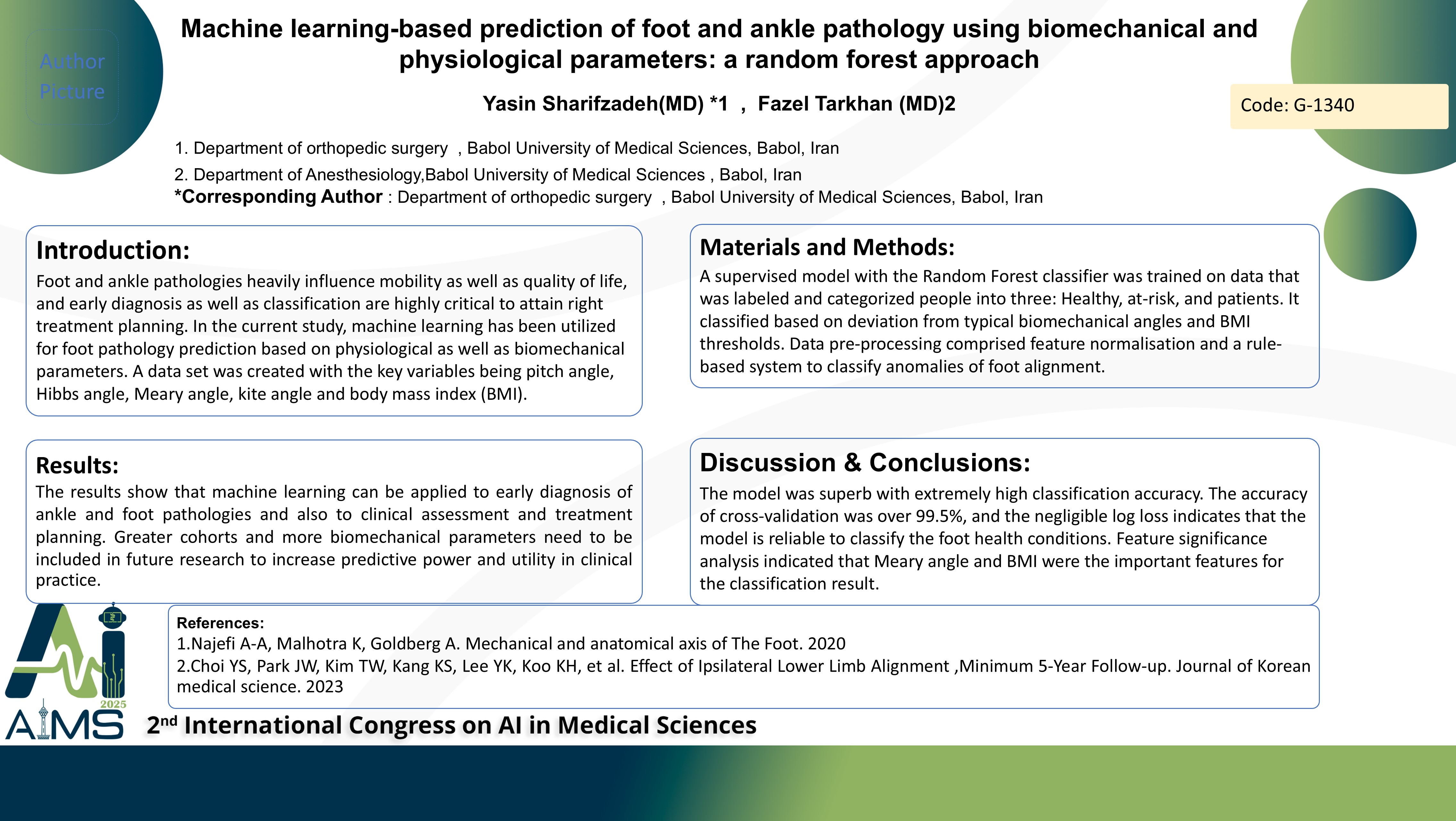پیش بینی آسیب شناسی پا و مچ پا بر اساس یادگیری ماشینی با استفاده از پارامترهای بیومکانیکی و فیزیولوژیکی: رویکرد تصادفی
کد: G-1340
نویسندگان: Yasin Sharifzadeh * ℗, Fazel Tarkhan
زمان بندی: زمان بندی نشده!
برچسب: سیستم های تصمیم یار بالینی
دانلود: دانلود پوستر
خلاصه مقاله:
خلاصه مقاله
Introduction: Foot and ankle pathologies heavily influence mobility as well as quality of life, and early diagnosis as well as classification are highly critical to attain right treatment planning. In the current study, machine learning has been utilized for foot pathology prediction based on physiological as well as biomechanical parameters. A data set was created with the key variables being pitch angle, Hibbs angle, Meary angle, kite angle and body mass index (BMI). Data pre-processing A supervised model with the Random Forest classifier was trained on data that was labeled and categorized people into three: Healthy, at-risk, and patients. It classified based on deviation from typical biomechanical angles and BMI thresholds. Data pre-processing comprised feature normalisation and a rule-based system to classify anomalies of foot alignment. Summary of model performance: Cross-Validation Accuracy Scores: [0.992, 0.993, 0.996, 0.999, 0.998] Mean Cross-Validation Accuracy: 0.9956 (99.56% accuracy) Log Loss: 0.0349 Accuracy in the final test: 99.5% The model was superb with extremely high classification accuracy. The accuracy of cross-validation was over 99.5%, and the negligible log loss indicates that the model is reliable to classify the foot health conditions. Feature significance analysis indicated that Meary angle and BMI were the important features for the classification result. Results: The results show that machine learning can be applied to early diagnosis of ankle and foot pathologies and also to clinical assessment and treatment planning. Greater cohorts and more biomechanical parameters need to be included in future research to increase predictive power and utility in clinical practice.
کلمات کلیدی
Foot Disease, Biomechanical, Machine Learning
